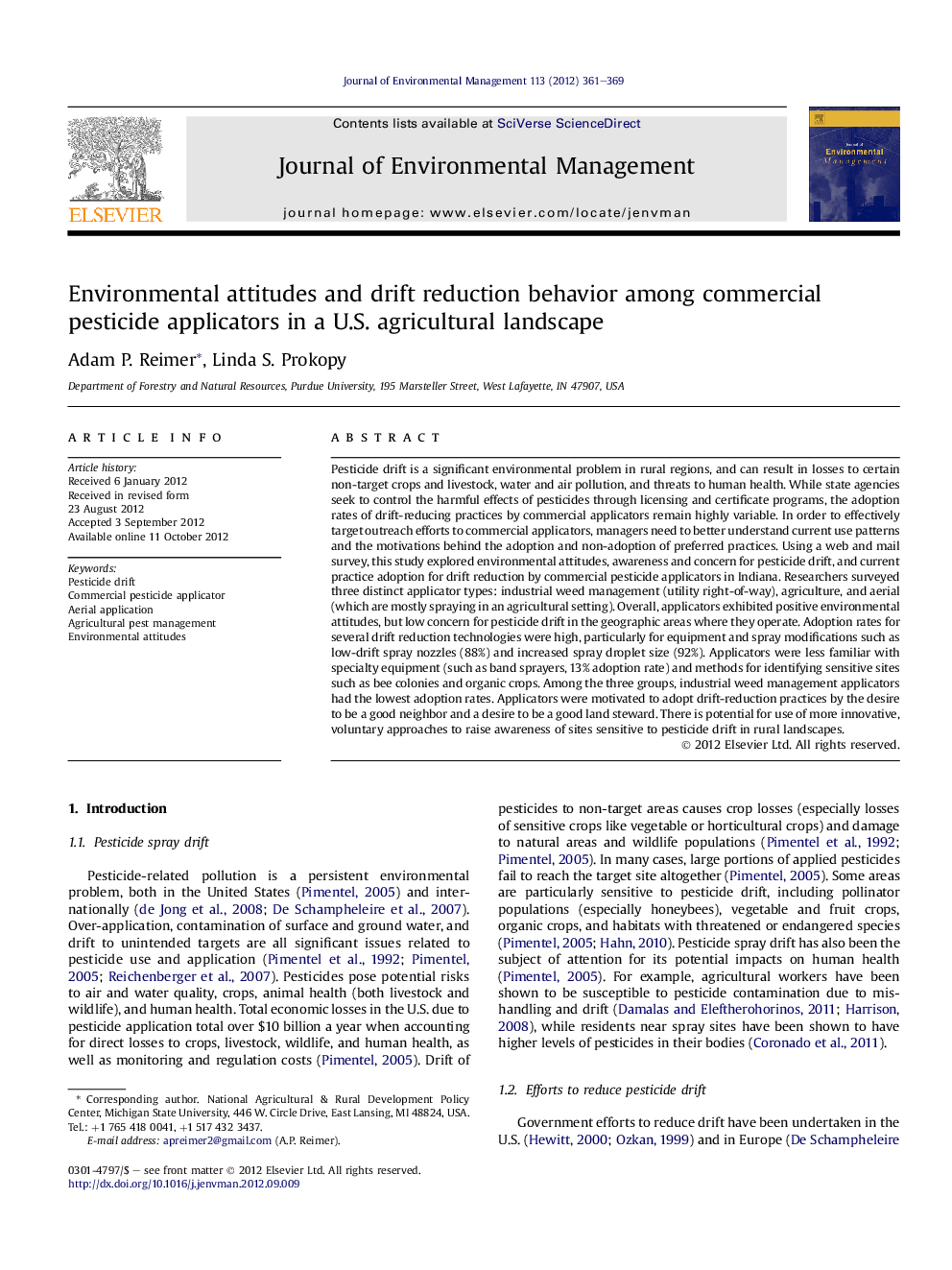| کد مقاله | کد نشریه | سال انتشار | مقاله انگلیسی | نسخه تمام متن |
|---|---|---|---|---|
| 1056718 | 1485299 | 2012 | 9 صفحه PDF | دانلود رایگان |

Pesticide drift is a significant environmental problem in rural regions, and can result in losses to certain non-target crops and livestock, water and air pollution, and threats to human health. While state agencies seek to control the harmful effects of pesticides through licensing and certificate programs, the adoption rates of drift-reducing practices by commercial applicators remain highly variable. In order to effectively target outreach efforts to commercial applicators, managers need to better understand current use patterns and the motivations behind the adoption and non-adoption of preferred practices. Using a web and mail survey, this study explored environmental attitudes, awareness and concern for pesticide drift, and current practice adoption for drift reduction by commercial pesticide applicators in Indiana. Researchers surveyed three distinct applicator types: industrial weed management (utility right-of-way), agriculture, and aerial (which are mostly spraying in an agricultural setting). Overall, applicators exhibited positive environmental attitudes, but low concern for pesticide drift in the geographic areas where they operate. Adoption rates for several drift reduction technologies were high, particularly for equipment and spray modifications such as low-drift spray nozzles (88%) and increased spray droplet size (92%). Applicators were less familiar with specialty equipment (such as band sprayers, 13% adoption rate) and methods for identifying sensitive sites such as bee colonies and organic crops. Among the three groups, industrial weed management applicators had the lowest adoption rates. Applicators were motivated to adopt drift-reduction practices by the desire to be a good neighbor and a desire to be a good land steward. There is potential for use of more innovative, voluntary approaches to raise awareness of sites sensitive to pesticide drift in rural landscapes.
► Commercial applicators exhibited positive environmental attitudes but low concern for pesticide drift specifically.
► Drift-reduction practice adoption rates were high for all commercial applicator categories.
► Differences in adoption rates differed between categories, with industrial weed applicators having the lowest rates.
► High adoption rates were motivated by the desire to be a good neighbor and land steward.
Journal: Journal of Environmental Management - Volume 113, 30 December 2012, Pages 361–369